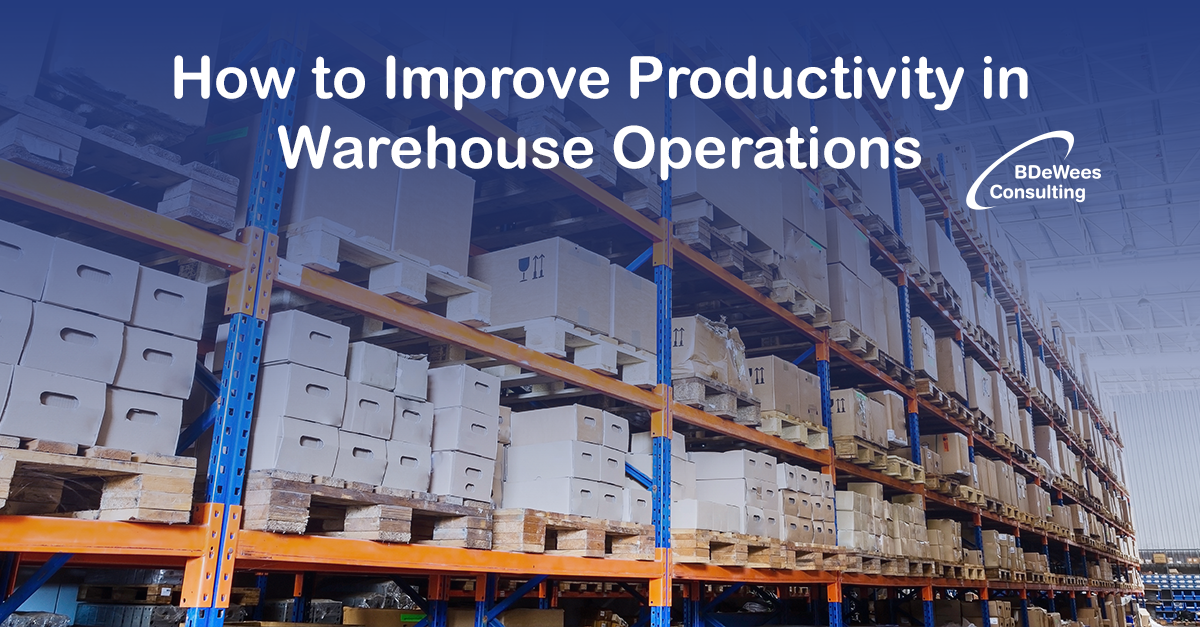How to Improve Productivity in Warehouse Operations

Have you analyzed your warehouse operations recently? Inefficient picking processes, poor use of space, and inventory visibility issues can be costly. But, your organization can improve efficiency and productivity by implementing these tips below.
Warehouses are about moving inventory, not storing inventory.
The speed of processing shipments has never been more important: Customers want products in their hands in days, or even hours, not weeks. And of course, customers won’t tolerate receiving a damaged or wrong item.
Track the number of daily mis-picks, and the number of pick lines per hour (a pick line is one item on an order or kit, and consists of at least an item number—the SKU—and quantity). Evaluate where improvements can be made.
Maintain real-time inventory visibility and management.
Your business should also influence and invest in technology that’s able to provide real-time inventory visibility and management. With this in place, your facility will be capable of handling sudden changes throughout because real-time inventory tracking assesses both average and variation in orders.
Create Organized Workstations.
The Occupational Safety & Health Administration (OSHA) reports that musculoskeletal disorders (carpal tunnel syndrome, tendinitis, muscle strains, lower back injuries, etc.) are one of the leading causes of workplace injuries and illnesses.
To reduce the risk of such injuries in repetitive, manual tasks, it’s important to design workstations according to the specific task and worker (for example, ensuring work surface height is the height of the conveyor or roller from floor level). Doing so increases ergonomic benefits and drives greater efficiency and productivity in everyday work.
Implement Lean Manufacturing.
Most manufacturing facilities are trending toward 5S/lean manufacturing as part of their efforts to improve manufacturing processes, enabling quicker, more efficient production and lowering overall costs. According to the EPA, “lean production techniques often create a culture of continuous improvement, employee empowerment, and waste minimization [in addition to] driving rapid, continual improvement in cost, quality, service, and delivery.”
Evaluate Storage Equipment.
One of the most important parts of evaluating industrial storage equipment is factoring in how storage systems can/will evolve with a facility’s needs over time. Performing a thorough assessment of current and future warehouse storage needs can improve storage density and picker productivity and drive significant cost savings over the long term.
Implement robust training programs.
Implementing effective technologies and analytics platforms will be a futile task if employees do not understand them and don’t know how to use them. This can be solved by putting in place robust training programs that can keep team members informed and up to date with the system features. The programs chosen should also include thorough reviews where everybody can give feedback.
Continuous Process Improvement.
To effectively drive productivity and efficiency in the warehouse, monitor and evaluate process improvement. Focus on setting objectives and accountability for improvement, review their progress, and continue to improve.
If you are looking for assistance in auditing and improving the quality or operations of your warehouse, please contact Jim DePew below.
__
Jim DePew
Vice President & Consultant
Mobile: (330) 631-9022
Office: (330) 915-2355 Ext: 103
Email: jdepew@bdewees.com
